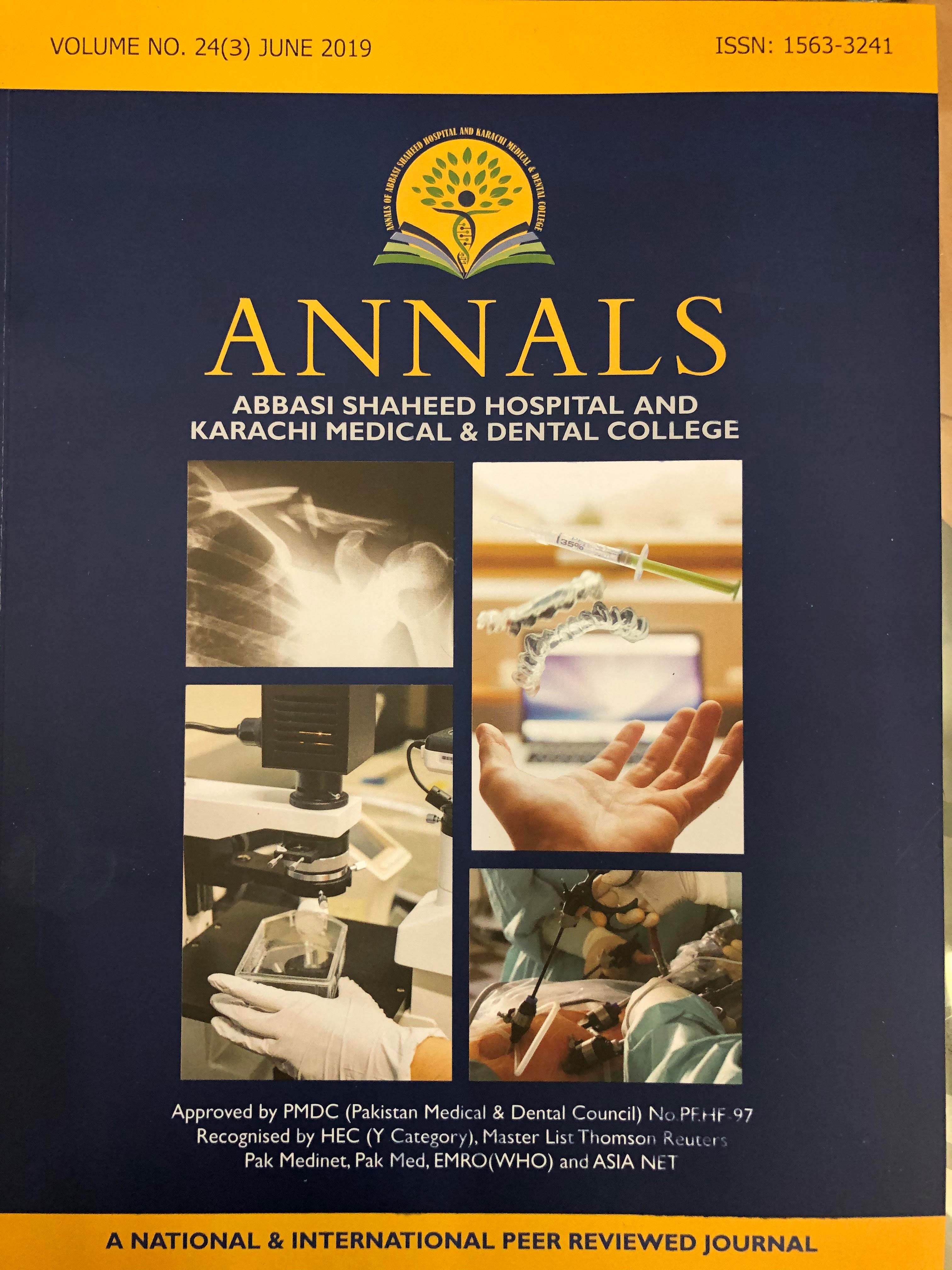Comparison of Mean Onset of Motor and Sensory Block of Isobaric Ropivacaine and Hyperbaric Bupivacaine for Elective Caesarean Sections at Tertiary Care Hospital, Karachi.
DOI:
https://doi.org/10.58397/ashkmdc.v24i3.4Abstract
Objective: To compare the mean onset time of motor and sensory block of Isobaric Ropivacaine and Hyperbaric Bupivacaine for elective caesarean sections at Tertiary Care Hospital, Karachi.
Methods: A double blinded Randomized control trial study carried out over the period of six months, from August 2016 to January 2017 using non probability consecutive sampling technique. A total of 128 pregnant women planned for LSCS under spinal anesthesia were enrolled in this study. Patients were randomly divided into two groups (Group B and Group R) receiving equipotent doses of spinal anaesthetic drugs. In group B, spinal anaesthesia were given to 64 patients with intrathecal injection of 3ml of 0.5% (5mg/ml) Hyperbaric Bupivacaine and in group R, 64 patients received spinal anaesthesia using 3ml of 0.5% (5mg/ml) Isobaric Ropivacaine. Motor block was evaluated by using Modified Bromage scale score and a score of >2 is consider as optimal motor nerve block. Sensory block was evaluated by using 25G needle pinprick method along the mid clavicular line bilaterally and sensory block (loss of sensation to pain) at T6 level is consider as optimal sensory nerve block. At 10 minutes, Final outcome for each group B and R will be labelled in term of mean time of achievement of motor and sensory block and two dermatomal sensory segment regression.
Results: Out of 128 patients, 64 patients receiving spinal anaesthesia using Hyperbaric Bupivacaine the mean duration to achieve sensory nerve block at T6 Level is found to be faster as compare to Isobaric Ropivacaine while the mean onset time of motor nerve block was also considerably significant in between the two groups (p=0.049).The Regression time of maximum sensory block from two dermatomal skin level is also found to be earlier in Isobaric Ropivacaine as compare to patients receiving spinal anaesthesia with Hyperbaric Bupivacaine (130.34 ± 15.26 vs 146.41 ± 12.81; p-value=0.0005). These regional anaesthetic properties of Isobaric Ropivacaine makes it a safer regional anaesthetic agent as Hyperbaric Bupivacaine.
Conclusion: Spinal anaesthesia using intrathecal Ropivacaine for elective caesarean sections is an effective and optimal drug of choice. Two Dermatomal Sensory Regression was also found to be earlier in Isobaric Ropivacaine thus ropivacaine provides surgically effective anaesthesia of shorter duration and early sensory onset without compromising neonatal outcome and maternal hemodynamics.
Downloads
Published
Issue
Section
License
Annals of Abbasi Shaheed Hospital and Karachi Medical and Dental College acquires copyright ownership of the content. The articles are distributed under a Creative Commons (CC) Attribution-Non-Commercial 4.0 License (http://creativecommons.org/licenses/by-nc/4.0/). This license permit uses, distribution and reproduction in any medium; provided the original work is properly cited and initial publication in this journal.



